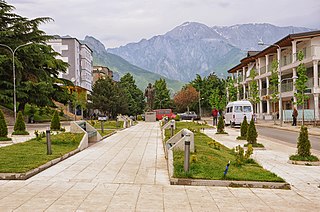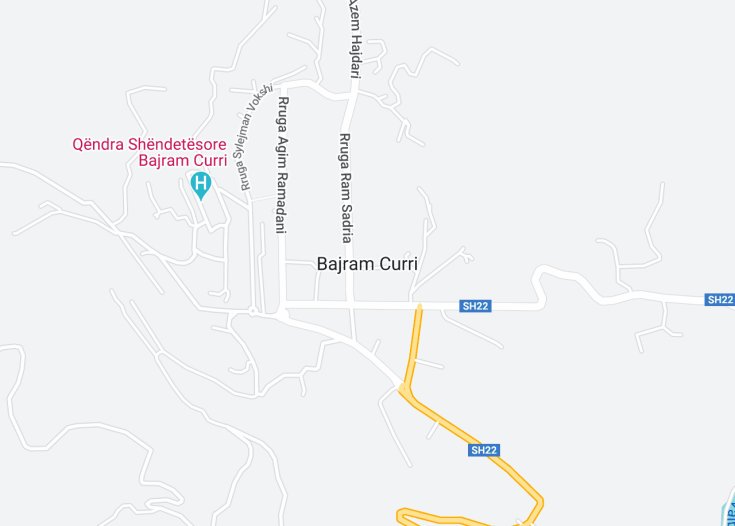Bajram Curri, a picturesque town nestled in the heart of the Albanian Alps, serves as the gateway to the enchanting Valbona Valley. With its rich history and stunning natural landscapes, this destination is perfect for adventurers and culture enthusiasts alike. From its rugged peaks to the vibrant local culture, Bajram Curri offers a unique blend of natural beauty and historical richness, making it an ideal spot for those seeking both tranquility and adventure in Albania.
When visiting Bajram Curri, be sure to explore the local markets for authentic Albanian crafts and delicacies. It’s a great way to experience the town’s vibrant culture firsthand.
Plan your visit during the spring or early summer to enjoy the best weather for hiking and experiencing the outdoor activities that Bajram Curri has to offer.
Top things to do & see in Bajram Curri (Kolgecaj)
Select the following sights and activities to discover best tickets and tours available in Bajram Curri (Kolgecaj).
Bajram Curri (Kolgecaj): A Hidden Gem in the Albanian Alps
| Country | Albania |
| Time in Bajram Curri (Kolgecaj) | GMT+1 |
| Language spoken | Albanian |
| Population | 6,250 (according to the 2022 census) |
| Currency | Albanian Lek (ALL) |
| Airports |
|
Bajram Curri (Kolgecaj) is a small township nestled in the mountainous region of northern Albania, part of the Tropojë District. Historically, this area has been secluded, shielded by the rugged Albanian Alps, which are famous for their dramatic landscapes and rich biodiversity. The town serves as an essential gateway to the Valbona Valley National Park, a sought-after destination for hikers and nature lovers.
As the administrative center of the Tropojë District, Bajram Curri plays a crucial role in the region’s governance and local economy. The town was named after Bajram Curri, a national hero who fought for Albania’s independence early in the 20th century. It’s a place steeped in history, with a notable resistance against Ottoman rule and later conflicts during the World Wars.
The isolation of Bajram Curri has preserved much of its traditional charm and cultural heritage, making it an intriguing place for cultural tourism. Visitors are often captivated by the traditional Gheg Albanian lifestyle, which includes unique culinary experiences and local crafts. The annual events and festivals in Bajram Curri also attract tourists, offering insights into local customs and traditions.
Despite its small urban population, Bajram Curri’s strategic location makes it an essential stopover for tourists heading to various alpine attractions in northern Albania. Its breathtaking natural scenery, combined with a rich historical aura, offers a unique juxtaposition of nature and history that’s rare in today’s rapidly modernizing world.
Where is Bajram Curri (Kolgecaj)?
Located in northeastern Albania, Bajram Curri (Kolgecaj) lies in the heart of the Albanian Alps, surrounded by rugged mountain terrain and lush valleys.
Distances:
| Route | Distance by car | Time by car |
|---|---|---|
| Tirana to Bajram Curri | 170 km | 4 hours |
| Shkodër to Bajram Curri | 178 km | 4 hours 30 minutes |
What is Bajram Curri (Kolgecaj) famous for?
Bajram Curri is renowned for its breathtaking natural landscapes, providing access to some of Albania’s most pristine mountainous areas like the Valbona Valley. Its historical significance and rich cultural heritage also contribute to its allure.
History
Prehistoric Era to Antiquity
Bajram Curri, historically known as Kolgecaj, has a storied past stretching back to prehistoric times. Early human settlements can be traced through various archaeological findings in the surrounding Tropoja region, suggesting that this area served as a strategic locale for ancient tribes due to its proximity to the Valbona River and fertile valleys conducive for early agriculture and settlement. Over the centuries, this area witnessed the ebb and flow of various tribes and civilizations, including the Illyrians who are recognized as the area’s earliest known inhabitants.
Medieval Period (5th Century – 15th Century)
Throughout the medieval period, Bajram Curri was an important crossing point and market town that fell under various dominions, experiencing numerous invasions and governance changes. During the Byzantine era, it was part of the broader Byzantine territories that exchanged hands with the rise and fall of empires. Later, it came under Ottoman influence, which introduced Islamic culture and architectural styles that are evident in some surviving structures today.
Modern Period (19th Century – 20th Century)
In the 19th century, Bajram Curri became significant as part of the Albanian resistance against Ottoman rule. Named after the national hero Bajram Curri, who fought valiantly for Albanian independence, the town takes great pride in its patriotic past. The 20th century saw Bajram Curri transitioning through turbulent periods, notably during the World Wars and under communist rule, each leaving distinctive marks on its cultural and socio-economic landscape. Post-communist era reforms have gradually opened the region to development and tourism, highlighting its historical and natural significance.
Visit Bajram Curri (Kolgecaj)
What to see and do in Bajram Curri (Kolgecaj), Albania
Explore the rich history and stunning landscapes of Bajram Curri. Nestled in northeastern Albania, this town offers a gateway into the Albanian Alps and the beautiful Valbona Valley National Park. Key attractions include:
- The Bajram Curri Museum, housing artifacts that depict the region’s culture through the ages.
- Outdoor activities such as hiking and rafting in the nearby Valbona River.
- The Ethnographic Museum of Kukaj, offering insights into traditional Albanian life.
Cultural enthusiasts and nature lovers alike will find plenty to engage with in this vibrant and historical town.
Annual Festivals and Events
Notably, Bajram Curri hosts several cultural and music festivals throughout the year that celebrate its unique heritage and vibrant present. The most famous is the Gjethi Festival, held every summer, which showcases traditional Albanian music, dance, and crafts, drawing visitors from across Albania and beyond. Other significant events include the Tropoja Folklore Festival and the annual Spring Celebration, which marks the beginning of the pastoral season with various local festivities.
Best time to visit Bajram Curri (Kolgecaj)
The optimal times to visit Bajram Curri are during the spring and early autumn. These seasons offer pleasant weather, perfect for exploring the outdoor activities that Bajram Curri has to offer. The natural scenery is particularly breathtaking in May when the countryside is vibrant with blooming flowers, or in September when the foliage begins to change.
Is Bajram Curri (Kolgecaj) worth visiting?
Bajram Curri is unquestionably worth a visit. Its unique blend of rich history, immersive cultural experiences, and stunning natural beauty provides a distinctive offering unlike any other place. Whether you’re a history buff eager to explore Albanian heritage or an adventurer looking for your next great trek, Bajram Curri promises experiences that are both enriching and unforgettable.










